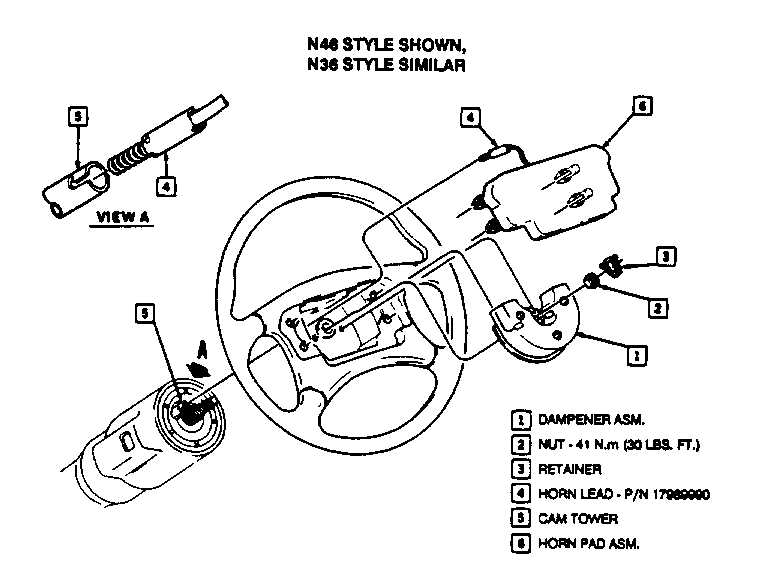STEERING WHEEL VIBRATION INSTALL DAMPENER/HORN LEAD

Models Affected: 1989 PONTIAC SUNBIRD EQUIPPED WITH AUTOMATIC TRANSAXLE
Some customers may comment about steering wheel vibration while the vehicle is in gear, stopped, with the engine operating at idle speed (example: stopped at a traffic light).
This condition may be corrected by installing a steering wheel dampener Part Number 22539273, and a longer horn lead, Part Number 17989990, as follows:
1. Disconnect the negative battery cable.
2. Disengage the horn pad from the steering wheel (the horn lead will still be connected).
3. Disconnect the horn lead from the cam tower (in the column assembly) and from the horn pad. Remove the horn pad assembly.
4. Remove the retainer and steering wheel nut from the steering shaft.
5. Position the dampener assembly on the steering shaft, making sure that the locator tabs on the bottom of the dampener base plate fit into the wheel puller holes in the steering wheel hub. Install the steering wheel nut and tighten to 41 N.m (30 lbs. ft.). Reinstall the steering nut retainer (IMPORTANT This retainer MUST be reinstalled). See illustration.
6. Connect the new (longer) horn lead to the steering pad, and then to the cam tower in the column assembly.
7. Position the horn lead so that when the horn pad is installed to the steering wheel, the horn lead will NOT contact the dampener weight.
8. Align the horn pad retainer posts with the holes in the steering wheel. Install the horn pad by pushing on the pad until the retainer posts are fully seated and engaged.
9. Connect the negative battery cable and check for proper horn function.
This dampener is now standard on 1990 Sunbird models equipped with automatic transaxle.
Parts are currently available from GMSPO.
WARRANTY INFORMATION:
Labor Operation Number: T4626 Labor Time : .2 hrs. Trouble Code : 92

General Motors bulletins are intended for use by professional technicians, not a "do-it-yourselfer". They are written to inform those technicians of conditions that may occur on some vehicles, or to provide information that could assist in the proper service of a vehicle. Properly trained technicians have the equipment, tools, safety instructions and know-how to do a job properly and safely. If a condition is described, do not assume that the bulletin applies to your vehicle, or that your vehicle will have that condition. See a General Motors dealer servicing your brand of General Motors vehicle for information on whether your vehicle may benefit from the information.
